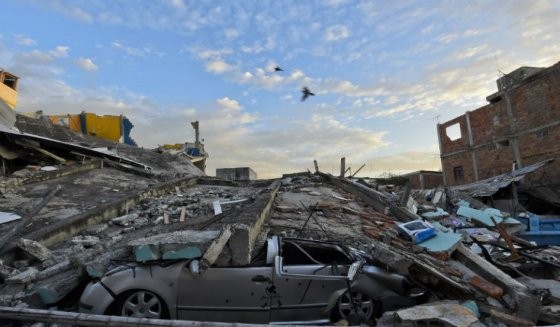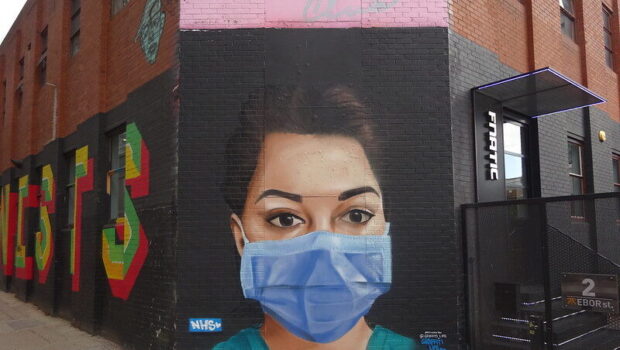Will Mexico evolve towards social democracy?
¿Evolucionará México hacia la socialdemocracia?
Ramón Cota Meza
It would seem overconfident to raise this question when the Mexican state is beginning to show signs of a failed state in the face of massive homicidal violence and growing insecurity caused by organized crime bands in many parts of the country, while President López Obrador (AMLO) dispenses them with loving messages (“hugs, not bullets”). This terrible situation, the stridency of theatrical political battles and the ideological Manicheism assiduously stoked by AMLO seem to stifle the emergence of a fundamental fact: the formation of a consensus for the creation of a universal welfare state to lessen inequality and poverty in the country.
All political forces, including business leaders who openly participate in politics, share this consensus. All of them agree that it is neither possible nor desirable to restore the neoliberal economic model, and that the great present task is to build a level playing field to relieve accumulated social tensions and create opportunities for progress for all Mexicans.
This consensus has emerged from the harsh reality of facts, mainly the massive vote and popular support for AMLO and his Morena movement, which has steadily grown since 2018 despite the disastrous results of all their policies. The economy has not grown. Private investment is stagnant. The Covid-19 pandemic management has been lethal. The public healthcare system has been dismantled without creating a new one to date. Public spending is concentrated in grandiose projects whose profitability is dubious and cost much higher than estimated to the detriment of essential social protection expenditures. Political corruption is rampant, while public administration is in the hands of unskilled officials whose only requirement is political loyalty, all of these marked by a clear tendency towards concentration of power in AMLO hands.
These disastrous mistakes, omissions and dangerous trends have forced the opposition´s parties to keep united and awaken the middle class in large cities. As a result of the 2021 mid-term election, a counter-power was created in the Chamber of Deputies, which have stopped regressive government initiatives, such as the reform of the electricity industry, which aimed to heavily use polluting energy sources, obstruct the private use of renewable ones, and compulsively centralize the industry without a viable financial and technical plan. The defeat of this initiative has strengthened the opposition’s conviction to remain united and increase its vote.
Thus, besides the urgent need of creating a universal welfare state, there are strong additional reasons supporting the emerging consensus. These can be summed up as stopping AMLO’s destructive and autocratic drift, while making room for socially responsible private capital. As the 20th century’s history shows, these are some basic conditions for creating a social democratic state.
Social democracy it is a neither a tepid communism nor a benevolent mask for unfettered economic liberalism. Rather, it is a coherent, well-grounded and flexible ideology in its own right, aimed at reconciling social justice with capitalism as the most efficient creator of economic wealth. Social democracy acceptance of capitalism is not a pragmatic device but a coherent assumption of individual freedom, which includes free enterprise, yet limited for the sake of fair wealth distribution. Economic wealth is a social product, not an individual one.
***
The creation of a social democratic state would not be a novelty in Mexico. With the exception of government’s authoritarianism and the corporatist hegemony of the PRI and its predecessors, this was the country’s prevailing ideology from 1920 to 1982. This political profile ―under the name of “social liberalism― was a product of the Mexican revolution (1910-1920) and began to rule before several developed countries adopted similar policies. During this long period, the Mexican state created a welfare state, encouraged the formation of large labor unions, distributed land to peasants, nationalized basic industries, expanded the middle class and created a Mexican industrial class, all of these without contracting foreign debt.
In the period 1952-1980, the Mexican economy grew more than 6 percent on average per year. Social services ―markedly education and healthcare―, and economic infrastructure exponentially grew. However, big countryside regions remained in poverty while new ones arose. Working classes, teachers and healthcare personnel mobilized for wage increases and better working conditions, while the prosperous industrial cities began to be encircled by poverty belts. This economic model ran out of steam in the late 1960’s, was transformed by contracting large sums of foreign debt in the 1970’s to end in 1980-1982 because of the global financial crisis that hit 40 debtor countries around the world.
The inception of “social liberalism” after the Mexican revolution, and the new situation created by AMLO’s electoral triumph in 2018 after 30 years of neoliberal rule, clearly fit into the “double movement” that Karl Polanyi identified as the dynamics of the modern world (The Great Transformation, 1944). Polany’s “double movement” refers to the process of capitalist expansion and wealth concentration that provoke protective reactions from society, which in turn unleashes new political, economic and social dynamics.
***
The biggest moments of the Mexican social justice regime were the presidential periods of Álvaro Obregón (1920-1924), Plutarco Elías Calles (1924-1928) ―whose influence prolonged during the ensuing three brief presidencies until 1934―, and its culmination in the Lázaro Cárdenas presidency (1934-1940). Mexico’s social justice regime thus predates Franklin D. Roosevelt’s New Deal, from which it benefited politically in due course. In expropriating the foreign oil companies in 1938, President Cárdenas reasoned that the balance of power in the United States would favor his historical decision, as indeed it occurred.
During the post-war period, the Mexican government adopted industrialization as a priority, so smoothing its social policies, without abandoning them altogether. Since the industrial class was incipient, the government assumed such a role, while encouraging and protecting the birth of a domestic industrial class, which turned out to be very dependent on the government. This model was called “stabilizing development” (1952-1970), which affected the income and living conditions of workers and peasants. The successive governments tried to compensate for this damage by expanding social services, while holding back working class demands in order to protect the new industrial class.
This state of affairs prevailed until 1970, when President Luis Echeverría resumed and reinforced the social commitment of the Mexican revolution. To achieve this goal a tax reform was needed but the vested interests created during the previous period prevented it. It was then, about 1973, that the Mexican government resorted to huge foreign borrowing. This trend was deepened by President José López Portillo (1976-1982) until oil prices plummeted and interest rates increased in the year 1980, so causing a deep economic crisis that lasted throughout the 1980s. However, Echeverría and López Portillo social policies dramatically improved working class, peasants and middle class living conditions, while public services and economic infrastructure grew like never before in Mexico’s history.
***
The rest is well-known history. Following the hardships of Miguel de la Madrid’s presidency (1982-1990), the Mexican government began to adopt the neoliberal model that prevailed from 1990 to 2018, when history took the turn that now has the country in shambles. However, despite AMLO’s clumsy and boring rhetoric, which paints the entire neoliberal period in black, there was important political progress, such as the adoption of the democratic system supported by sound institutions that have allowed political alternation in almost all the government levels since the year 2000, while speech freedom, muckraking journalism and transparency of public information are flourishing.
Unfortunately, democracy has not yielded material fruits for most people. Throughout the political transition years beginning in year 2000, the political actors dedicated themselves to distribute positions and privileges, leaving the neoliberal model untouched. The mainstream mass-media and public opinion by their part ―which also took the goodness of neoliberalism for granted―, focused on denouncing political corruption and criminal violence as if they were the only obstacles for the neoliberal promised fruits.
The explicit or implicit acceptance of the neoliberal model by political actors, low economic growth, wealth concentration, poverty and inequality increasing and political corruption scandals fueled the fury of both the poor and middle class not only against neoliberalism but also against the political system as a whole, thus paving the way for AMLO’s triumph.
After more than three years of AMLO’s government, most of the middle class that voted for it has become disillusioned, while doubt begins to erode their closest follower’s loyalty, not so the poorest, who still keep AMLO’s popularity very high.
***
Whether the middle class, participatory businessmen, the media and opposition political parties will be able to offer convincing ideas to the poor majority in the 2004 presidential election, is an open question. One plausible course is that Morena get divided and a candidate able to straighten the boat comes out of its ranks. In any case, the biggest challenge remains to be the state of the poor voters’ political conscience who seem to be satisfied with the handouts that AMLO dispenses them.
Such is the biggest obstacle for the creation of a genuine social democratic state, whose basic subjective condition is the existence of an informed citizenry.
El mayor desafío sigue siendo el estado de conciencia de la mayoría de los mexicanos, que parece conformarse con las dádivas que el presidente de la república les dispensa. Este es el mayor obstáculo …
Parecería temerario plantear la pregunta que titula este artículo cuando el estado mexicano empieza a mostrar signos de estado fallido por su impotencia ante la violencia homicida y la inseguridad causada por el crimen organizado. Esta terrible situación, el fragor de las batallas políticas y el divisionismo ideológico atizado por el gobierno nos hacen perder de vista la emergencia de un hecho fundamental: la formación de un consenso por la creación de un estado de bienestar universal que disminuya la desigualdad y la pobreza. Este consenso es compartido por todas las fuerzas políticas, incluyendo a los líderes empresariales que participan abiertamente en política. Todos ellos concuerdan en que no es posible ni deseable restaurar el modelo económico neoliberal y que la gran tarea presente es construir un piso parejo que descargue las tensiones sociales acumuladas y abra oportunidades de progreso para todos los mexicanos.
Este consenso ha surgido de la dura realidad de los hechos. En primer lugar la masiva votación por López Obrador y su movimiento Morena, que no ha hecho sino crecer desde 2018, pese a los desastrosos resultados de su gobierno en todos los renglones: la economía no ha crecido; la inversión privada está estancada; la gestión de la pandemia del Covid-19 ha sido desastrosa; el gasto público está concentrado en proyectos de dudosa rentabilidad y cuyo costo es mucho más alto que el estimado en perjuicio de gastos esenciales de protección social; la corrupción política campea a sus anchas, y la administración pública está en manos de funcionarios improvisados cuyo único requisito es la lealtad al presidente, todo ello marcado por una tendencia indudable a la concentración del poder político en el poder ejecutivo.
Ante estos hechos, no es fácil encontrar una explicación del apoyo popular al presidente, considerando que la mayoría reprueba sus políticas. Es probable que muchos mexicanos sigan confiando en los hombres providenciales, como ha sido a través de la historia, pues es indudable que la mayoría, sobre todo los más pobres, identifican a López Obrador como el campeón contra el neoliberalismo, del cual no desean saber nada.
Los opositores admiten esta realidad y reconocen a López Obrador el mérito de haberla puesto en lo alto de la agenda nacional. Esta es la base del consenso. Aparte de esto, casi no hay nada en lo que estén de acuerdo con el gobierno, pero los partidos de oposición carecen de fuerza por sí mismos. De ahí la importancia de que se unan y obtengan apoyo de fuerzas no partidistas. De hecho, en la elección intermedia de 2021se unieron en el frente “Va por México” y lograron crear un balance en la Cámara de Diputados. Este frente ha derrotado iniciativas de reformas regresivas del gobierno, como la de reforma de la industria eléctrica, cuyo objetivo era restablecer el uso de fuentes de energía contaminantes, centralizar compulsivamente la industria y obstruir la participación del capital privado sin presentar una alternativa financiera y técnica viable. La derrota de esta iniciativa en el Congreso ha fortalecido la convicción de la oposición de mantenerse unida y aumentar su votación.
Tenemos, pues, tres grandes acuerdos que subyacen al nuevo consenso: la necesidad inaplazable de crear un estado de bienestar universal, detener la deriva autoritaria y desastrosa del gobierno, y abrir espacio para la participación del capital privado con responsabilidad social. Como lo muestra la historia del siglo XX, estas son algunas de las condiciones básicas de un estado socialdemócrata.
La socialdemocracia no es un socialismo deslavado, ni una máscara social del liberalismo económico, sino una ideología por derecho propio orientada a conciliar la justicia social con las ventajas del capitalismo como creador de riqueza. La socialdemocracia respeta la libertad individual, la cual incluye la libertad de empresa, pero pone límites a la concentración de la riqueza en pocas manos y procura la distribución equitativa de sus frutos. Para la socialdemocracia, la riqueza económica es un producto social, no individual.
***
La emergencia de un estado socialdemócrata no sería una novedad en México. Si exceptuamos el autoritarismo gubernamental y la hegemonía no democrática del PRI y sus antecesores, tal fue la ideología que imperó en el país por más de medio siglo, desde 1920 hasta 1982. Este perfil socialdemócrata fue producto de la revolución mexicana y empezó a regir antes que de los países desarrollados adoptaran políticas similares. En este largo periodo el estado mexicano creó un estado de bienestar, expandió la clase media, participó activamente en la economía y estimuló la creación de una clase industrial nacional.
Entre 1952 y 1980, la economía mexicana creció más de 6 por ciento en promedio anual. La clase media, los servicios sociales y la infraestructura aumentaron exponencialmente, si bien permanecieron y se formaron nuevos bolsones de pobreza en el campo, mientras las ciudades fueron rodeadas por cinturones de miseria. Este modelo mostró su agotamiento a finales de la década de 1960, fue transformado en la década de 1970 y finalizó en 1980-1982 a causa de la crisis financiera global que azotó entonces a los países deudores de todo el mundo.
***
La trayectoria socialdemócrata de México a lo largo de 60 años y la situación creada por la victoria de López Obrador en 2018 encajan claramente en el “doble movimiento” que Karl Polanyi identificó como la dinámica del mundo moderno: procesos de expansión capitalista que provocan reacciones de protección de la sociedad y crean nuevas dinámicas económicas, políticas y sociales (La gran transformación).
La primera reacción defensiva de la sociedad mexicana en el siglo XX es la revolución mexicana (1910-1920), que desembocó en un régimen de justicia social dirigido por caudillos que crearon instituciones sociales duraderas, apoyados por obreros y campesinos. Los momentos estelares de este nuevo régimen fueron las presidencias de Álvaro Obregón (1920-1924), Plutarco Elías Calles (1924-1928) ―cuya influencia se prolongó en las tres presidencias breves que le siguieron hasta 1934― y su culminación en la presidencia de Lázaro Cárdenas (1934-1940). El régimen de justicia social de México es pues anterior al New Deal de Franklin D. Roosevelt y del cual se benefició políticamente. Al expropiar las compañías petroleras extranjeras en 1938, el presidente Lázaro Cárdenas razonó que la relación de fuerzas en Estados Unidos favorecería su histórica decisión, como en efecto ocurrió.
El mundo de posguerra restó radicalismo a los gobiernos mexicanos sin orillarlos a abandonar su compromiso social del todo. Sin embargo, el primer lugar de la agenda fue ocupado por la industrialización del país sin que hubiera una clase industrial que la encabezara. Así que el gobierno asumió ese papel en forma directa, al tiempo que animaba y protegía el nacimiento de una clase industrial nacional que resultó muy dependiente del gobierno. Este modelo fue llamado “desarrollo estabilizador” (1952-1970). El cambio de prioridades afectó el ingreso y las condiciones de vida de obreros y campesinos pero las sucesivas administraciones intentaron compensar este perjuicio con la ampliación de los servicios de salud y educativos para toda la población, al tiempo que mantenían a raya las demandas salariales de los trabajadores para favorecer a la nueva clase industrial.
Este estado de cosas se mantuvo hasta 1970, cuando el gobierno de Luis Echeverría (1970-1976) retomó y reforzó el compromiso social legado por la revolución mexicana. Para ello era necesaria una reforma fiscal pero los intereses creados durante el “desarrollo estabilizador” la impidieron. Fue entonces que el gobierno mexicano empezó a depender del crédito externo a partir de 1973. Esta política fue profundizada por el presidente José López Portillo (1976-1982), hasta que la caída de los precios del petróleo y el aumento de la tasa de interés provocaron una profunda crisis de deuda que se prolongó durante toda la década de 1980. Pese a haber terminado en crisis económicas devastadoras, los gobiernos de Echeverría y López Portillo legaron una vasta obra social en educación, salud e infraestructura.
***
Lo demás es historia muy conocida. Después del interregno del presidente Miguel de la Madrid (1982-1990), el gobierno mexicano adoptó el programa neoliberal que imperó desde 1990 hasta 2018, cuando la historia dio el vuelco que tiene ahora al país en vilo. A pesar de la retórica del gobierno actual, que pinta de negro todo el periodo neoliberal, hubo avances políticos importantes en ese periodo, como la adopción del sistema democrático con instituciones sólidas que facilitaron la alternancia en el gobierno federal y en casi todos los gobiernos estatales y municipales desde el año 2000.
Por desgracia, si exceptuamos la alternancia, la mayor transparencia de los asuntos públicos y el clima de libertad de expresión, la democracia no ha arrojado frutos materiales para la mayoría de la población. Durante la transición política que empezó el año 2000, los actores políticos se abocaron al reparto de puestos y prebendas, dejando intocado el modelo económico neoliberal. Por su parte, los medios de comunicación y la opinión pública dominante, que también daban por sentada la bondad del neoliberalismo, se concentraron en atacar la corrupción, como si ésta fuera el único obstáculo para que ese modelo económico diera los frutos prometidos.
La aceptación explícita o implícita del modelo económico neoliberal por los actores políticos, el bajo crecimiento económico, la concentración de la riqueza, el aumento de la pobreza y los escándalos de corrupción política atizaron la furia de los pobres y de la clase media misma no sólo contra el neoliberalismo sino contra el sistema político en conjunto, creando así el ambiente para el triunfo de López Obrador y Morena.
***
Muchos opositores asimilan a López Obrador con Echeverría y López Portillo en sentido peyorativo pero cometen un doble error. Primero, esos presidentes no fueron lo que ellos piensan; la narrativa que aducen es la de los centros de poder financiero mundial que culparon a los gobiernos nacionales de la crisis financiera sistémica del eurodólar que causó el incumplimiento de 40 países deudores. Segundo, la mayor parte de la obra material de esos gobiernos fue financiada con deuda externa, algo que López Obrador rechaza explícitamente.
Por otro lado, hay condiciones objetivas y subjetivas diferentes a las de entonces. Las condiciones objetivas más importantes son la integración comercial de México con Estados Unidos y Canadá, y el surgimiento de una clase empresarial independiente de los favores del gobierno, aunque muy temerosa de él. La condición subjetiva más importante es el surgimiento de una clase medida educada, bien informada y muy participativa en redes sociales, medios de comunicación y organizaciones de la sociedad civil.
Queda la cuestión de si esta nueva clase media, los empresarios participativos y los partidos de oposición serán capaces de ofrecer ideas convincentes a la mayoría del electorado en la elección presidencial de 2024. En caso afirmativo podríamos tener un nuevo equilibrio de poder. El mayor desafío sigue siendo el estado de conciencia de la mayoría de los mexicanos, que parece conformarse con las dádivas que el presidente de la república les dispensa. Este es el mayor obstáculo para la creación de un estado socialdemócrata, cuya condición subjetiva fundamental es la existencia de una ciudadanía informada y participativa.
imagen: ©Infobae
Ramón Cota Meza (Santa Rosalía, Baja California Sur, 1950). Ha sido articulista de los diarios El Universal y Milenio y de las revistas Letras Libres y Nexos, entre otras publicaciones. Twitter: @cota_meza
Las opiniones expresadas por nuestros colaboradores y columnistas son responsabilidad de sus autores y no reflejan necesariamente los puntos de vista de esta revista ni de sus editores, aunque sí refrendamos y respaldamos su derecho a expresarlas en toda su pluralidad. / Our contributors and columnists are solely responsible for the opinions expressed here, which do not necessarily reflect the point of view of this magazine or its editors. However, we do reaffirm and support their right to voice said opinions with full plurality.











This interpretation of reality is todays main conservative narrative to bring and persist in more of the same. Why is this participation in English? Who is the target of this message?